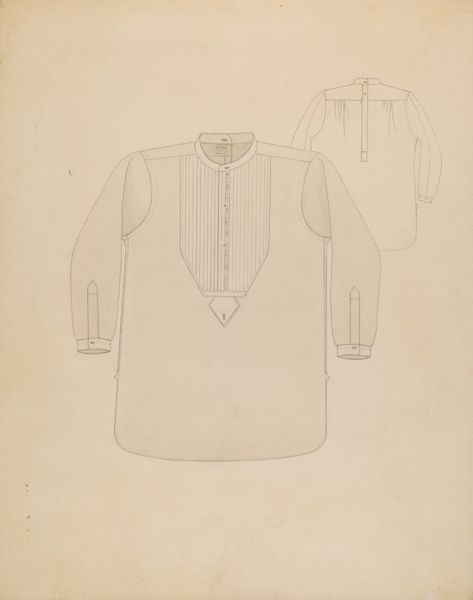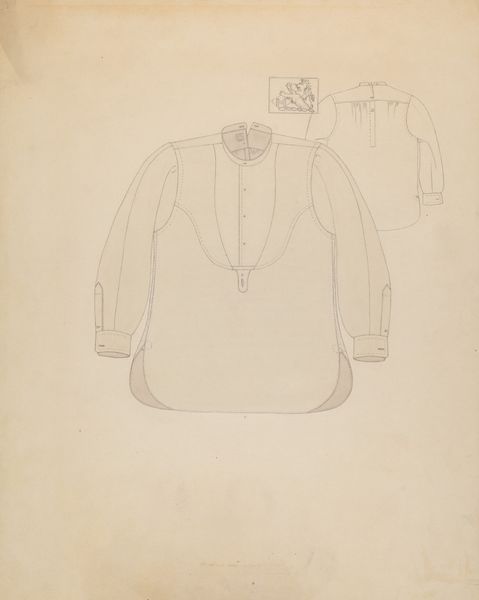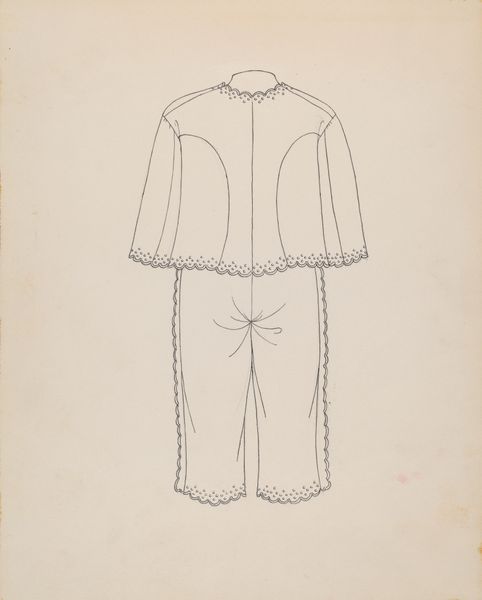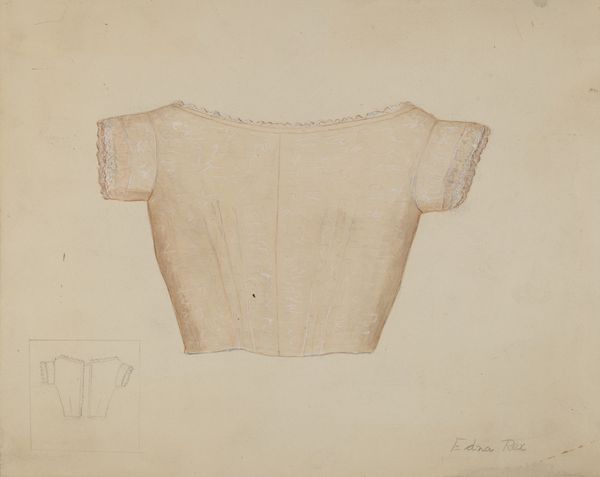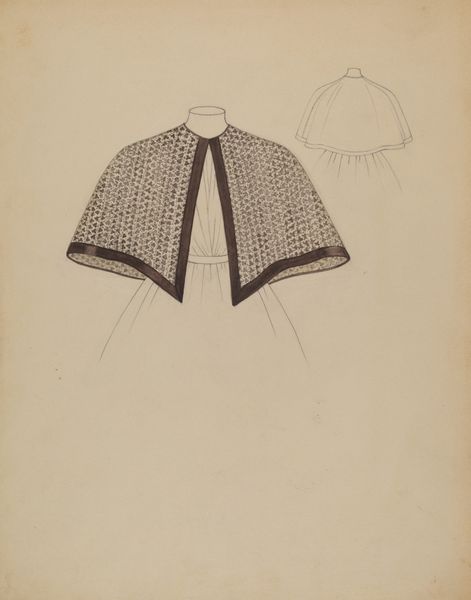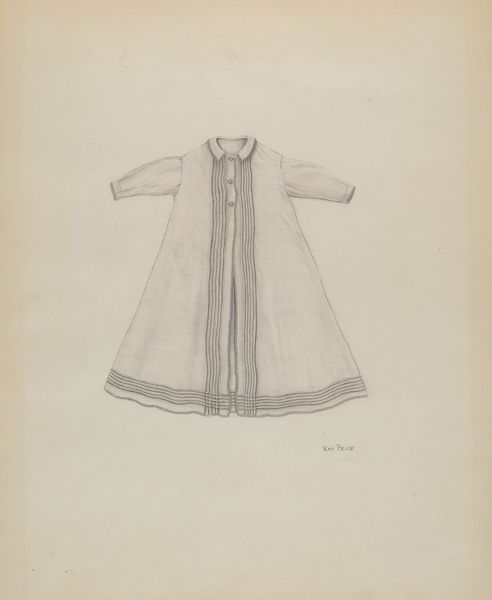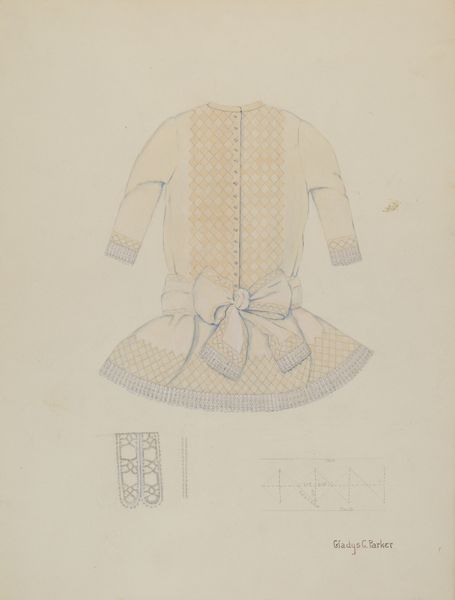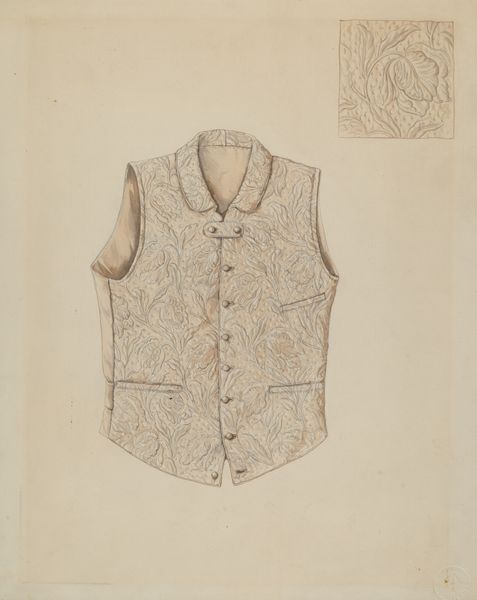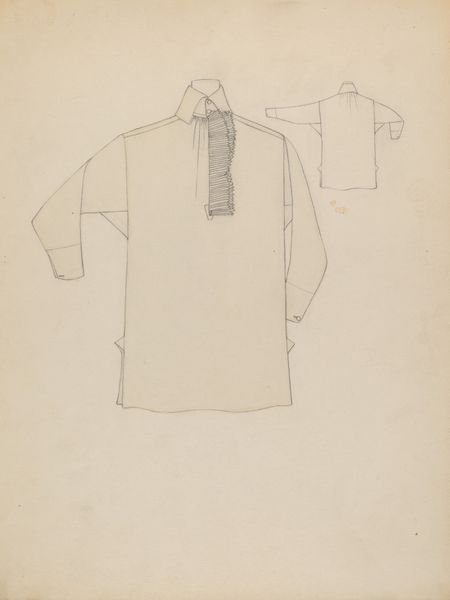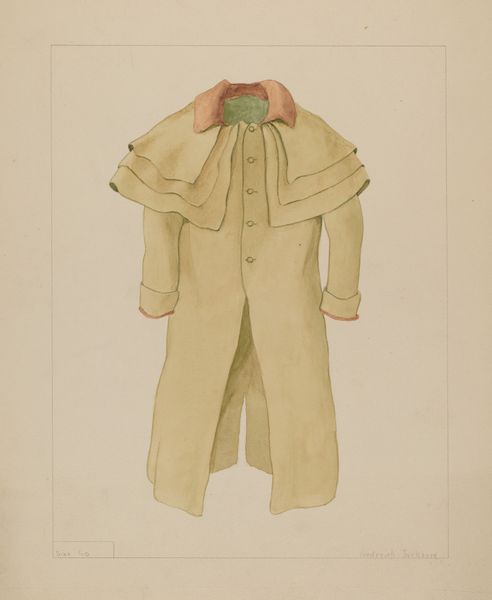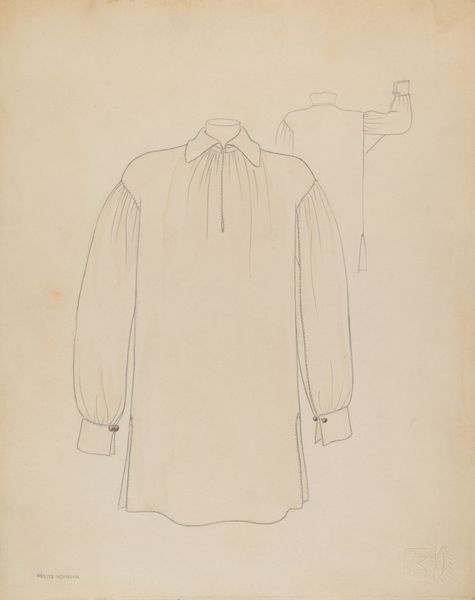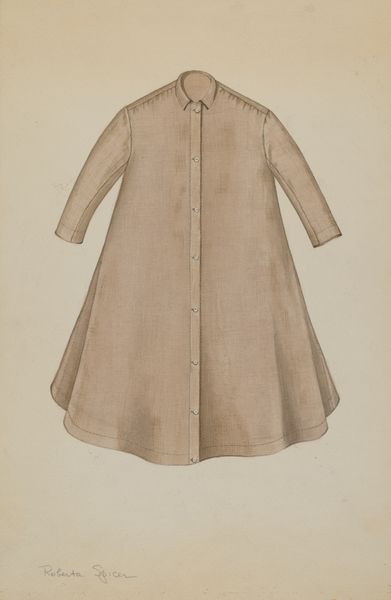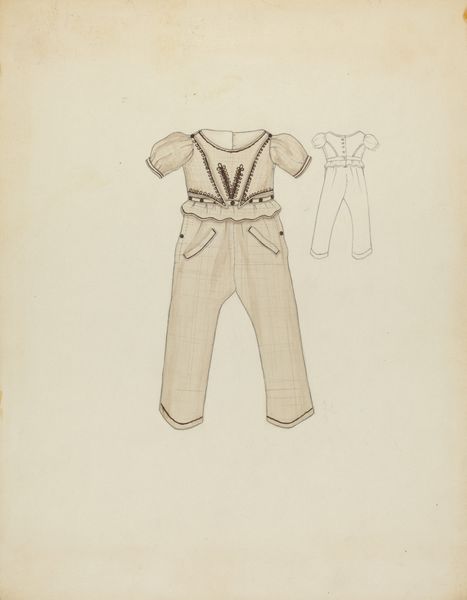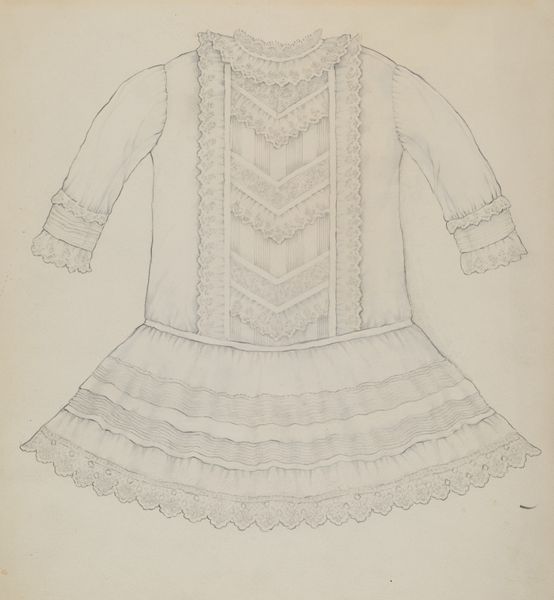
drawing, paper, pencil
#
portrait
#
drawing
#
paper
#
pencil
Dimensions: overall: 28.9 x 23 cm (11 3/8 x 9 1/16 in.)
Copyright: National Gallery of Art: CC0 1.0
Curator: Standing before us is a drawing entitled "Man's Miniature Shirt," dating back to around 1936 and created by Sylvia Dezon. Editor: My immediate response is to the texture and light! There's a remarkable lightness, yet a distinct visual order through careful linear details. The subtle shifts in shading really define the form. Curator: It's tempting to see this merely as a simple sketch of a shirt, but consider the context. In the midst of economic depression and pre-war anxieties, fashion and clothing became significant symbols of aspiration and normalcy. This drawing likely served as a template or design proposal, hinting at broader economic and social structures of the time. Editor: True, the drawing's precision emphasizes geometric purity and understated design, a real sense of structure emerges from the collar, bow tie, and cuffs. I keep circling back to how those fine pencil lines construct the overall form! The delicate shading around the sleeves gives them volume and makes the object seem almost three-dimensional, which feels contradictory when contrasted with the flat picture plane. Curator: These pieces would have been important documentation within fashion design circles. Designs circulated for inspiration and manufacturing decisions. This drawing, preserved, can be viewed as a social document showing how the fashion industry responded to shifts in taste and economy during that period. Dezon's inclusion as the identified author shows a woman's active contribution to fashion authorship when female agency was not well acknowledged. Editor: The back of the shirt sketched behind seems incomplete. The lines become less distinct and create a soft background effect, setting off the precision of the form shown more fully. Does that choice signal how an idea is made final? What’s the story between front and back? Curator: Excellent question, considering this may represent something that did get realized, a finished prototype that once moved in and shaped its cultural impact, beyond what it simply depicts on paper! Editor: For me, it's the contrast of those intentional compositional decisions that allows light and depth into the scene, making the garment visually appealing on paper and as an aspirational idea. Curator: It’s fascinating how a simple drawing, viewed through these different perspectives, reveals deeper aspects of the design, social conditions, and human experience that might not be immediately apparent. Editor: Yes, beyond representation, it invites us to perceive form in time.
Comments
No comments
Be the first to comment and join the conversation on the ultimate creative platform.
